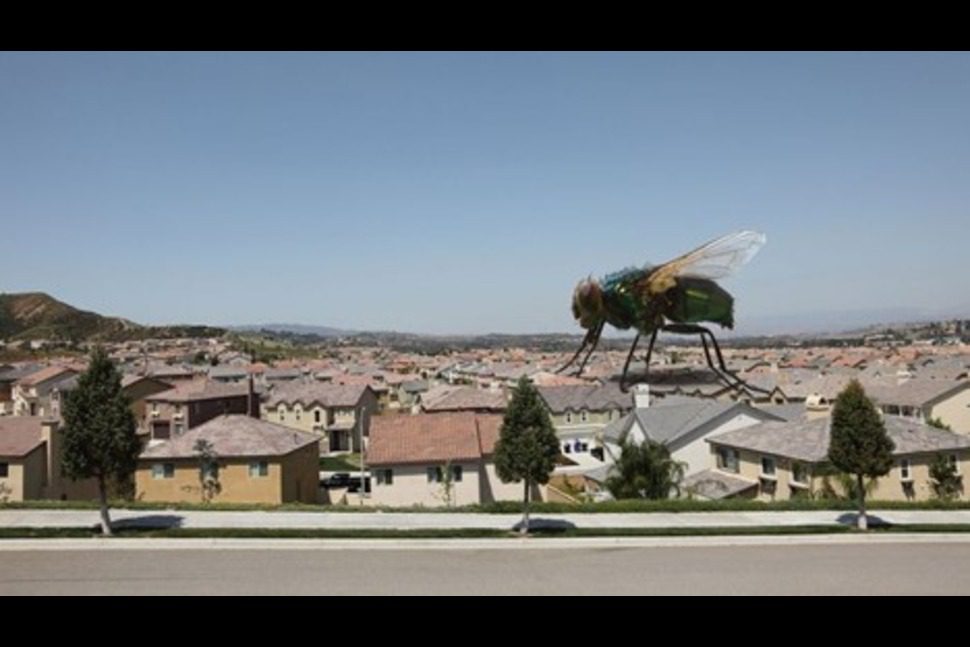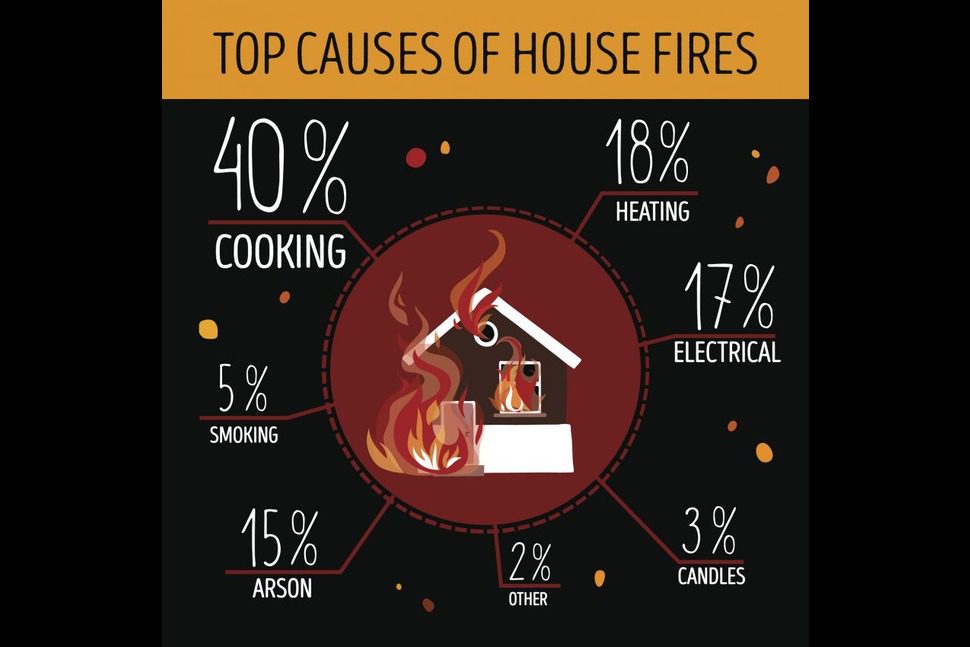
What is Personal Property Coverage?
May 4, 2023
Protect Your Home Against Pests
May 22, 2023The ignition of a house fire can spread uncontrollably and unpredictably in an instant, and can destroy a home within minutes. Whether small or large, fires are destructive and a danger to everyone in the home. A good Homeowners Insurance Policy is a must to help alleviate the financial loss, but preventing the risk of fire is a much better option.
According to statistics from the National Fire Protection Association (NFPA), there are more than 350,000 home fires each year in the U.S., leading to more than 2,600 deaths.
Homes are full of objects and combustible materials that will ignite under certain conditions. Although there are many causes of house fires, in each case, good risk management could avoid the situation; in each of these cases, it is certain that combustible materials were met with an unsafe hazard.
Cooking Fires
Cooking fires are the most common type of house fires, causing over 40 percent of house fires.
These fires are often caused by oil or grease that ignites in the oven or on the stove. If ever stepping away from the stove while cooking, the stove should be turned off until you return; if cooking oil or grease ignites, it is often too late to prevent a house fire. Also, it is important to make sure that your oven is kept clean, you’d be surprised how a build up of grease could ignite and catch the surrounding kitchen cabinets on fire.
Small kitchen appliances such as toasters, toaster ovens and electric griddles could also easily become a source of fires. Portable appliances should never be left unsupervised, and should be completely cooled down before storing away in a cabinet. Toasters are simple to clean, bread crumbs should be cleaned and emptied regularly to avoid build up and create an ignition source.
Exterior cooking options may also cause a threat, barbecue grills left unsupervised near a wood deck or near the exterior walls of a home could be a fire risk. Outdoor grills should be situated away from any structure or fence in order to provide a safe distance.
Heating Fires
Space heaters can cause fire when fabrics and other combustibles are in close proximity. Heating and cooling appliances of various types are the second leading cause of residential fires, responsible for over 12 percent of all home fires.
Heaters that utilize fuel are best avoided on the interior of your home. As in all cases, combustible materials and/or chemicals can ignite quickly or even explode causing certain destruction within seconds.
You should never leave your home with a space heater running, it just isn’t worth risking your home for a few moments of comfort when you return.
It is essential that you keep all flammable materials well away from your heaters.
Electrical Fires
Electrical faults in home wiring, short circuits, loose connections, overloaded circuits and faulty appliances could cause electrical fires. If you reside in an older home, it is a great idea to have an electrician inspect your wiring, circuit breaker box and test the system to make sure that the system is safe.
Electrical problems account for about 10 percent of all residential fires, but this type of fire is often deadly, accounting for about 18 percent of deaths due to home fire, according to the NFPA Home Structure Fires report. This is likely because electrical fires often ignite in hidden locations and build into major fires before residents are aware of them. And such fires frequently may ignite while residents are sleeping.
Properly installed electrical systems are very safe, with a number of built-in protective features.
Smoking Fires
Smoking is bad for your health; not only does smoking cause bodily harm but also carries the potential for igniting fires from cigarette butts dropped on carpeting, furniture, or other flammable materials.
23 percent of fire deaths are caused when a house fire is ignited by a cigarette butt as the resident falls asleep. Although most smokers clearly understand the risks involved, they seem to have the conviction that it won’t happen to them.
Candle Fires
Matches and lighters used to light candles, fireplaces or stoves are especially dangerous, they should be stored in a safe place well out of reach of children. Burning candles are unsafe unless surrounded by stone and in good distance from children and pets who may accidentally tip them over.
New Year’s Day, Christmas, and New Year’s Eve are the most common time for fires caused by candles. Candles can add a wonderful touch to family dinners and holiday celebrations, but always extinguish them before leaving the room. Candle flames should be kept away from any combustible materials.
There are modern alternatives for Candles, they now sell very inexpensive LED candles which run on battery power and even offer a flickering light to offer the same effect as a burning candle. LED candles do not warm up and pose no risk to your home.
Chemical Fires
Chemical fires are more commonly caused in commercial or industrial locations, however, they are often the culprit of garage fires in residential homes.
If storing gasoline or other flammable chemicals, they should be stored in a well-ventilated cabinet at a safe distance away from the home. Residential chemical fires occur most commonly when volatile vapors from gasoline and other petroleum liquids reach a flash-point temperature or when the fumes contact a source of open flame. Another common type of chemical fire is spontaneous combustion—the reaction of chemicals combining with oxygen in the air to produce enough heat to reach a flashpoint and ignite in flame.
Another cause of chemical fires is when oily rags spontaneously heat up. Never store oil-soaked or chemical-soaked rags after they are used. Especially never stack oily rags in a pile because heat can be spontaneously generated as the fumes combine with oxygen. Oily rags should be spread out in an outdoor location until the oil evaporates. Once thoroughly dry, they can be washed for reuse.
Christmas Tree Fires
Christmas trees and lights are a religious and cultural tradition for many families. Evergreen trees dry out rather quickly and pose a very serious risk of flash fire. A hot lightbulb or a spark can set the tree on fire, the tree would become a huge fuel source and within seconds the whole room would be engulfed.
Artificial trees are much safer, but an electrical fire from a bad wire in the light-bulb string or an overloaded outlet is still a risk. Never leave Christmas tree lights plugged in when you are not at home or when you are sleeping, no matter if the tree is natural or artificial. Check natural trees regularly to ensure they are not too dry. Make sure the water reservoir is kept full, which will prevent the tree from becoming tinder-dry.
Using LED bulbs, which don’t heat up and also consume much less energy, is the best option.
Christmas lights are sometimes used elsewhere in the home, such as around windows. These light strings can also cause draperies or other materials to ignite if they are faulty or if they are used improperly.

